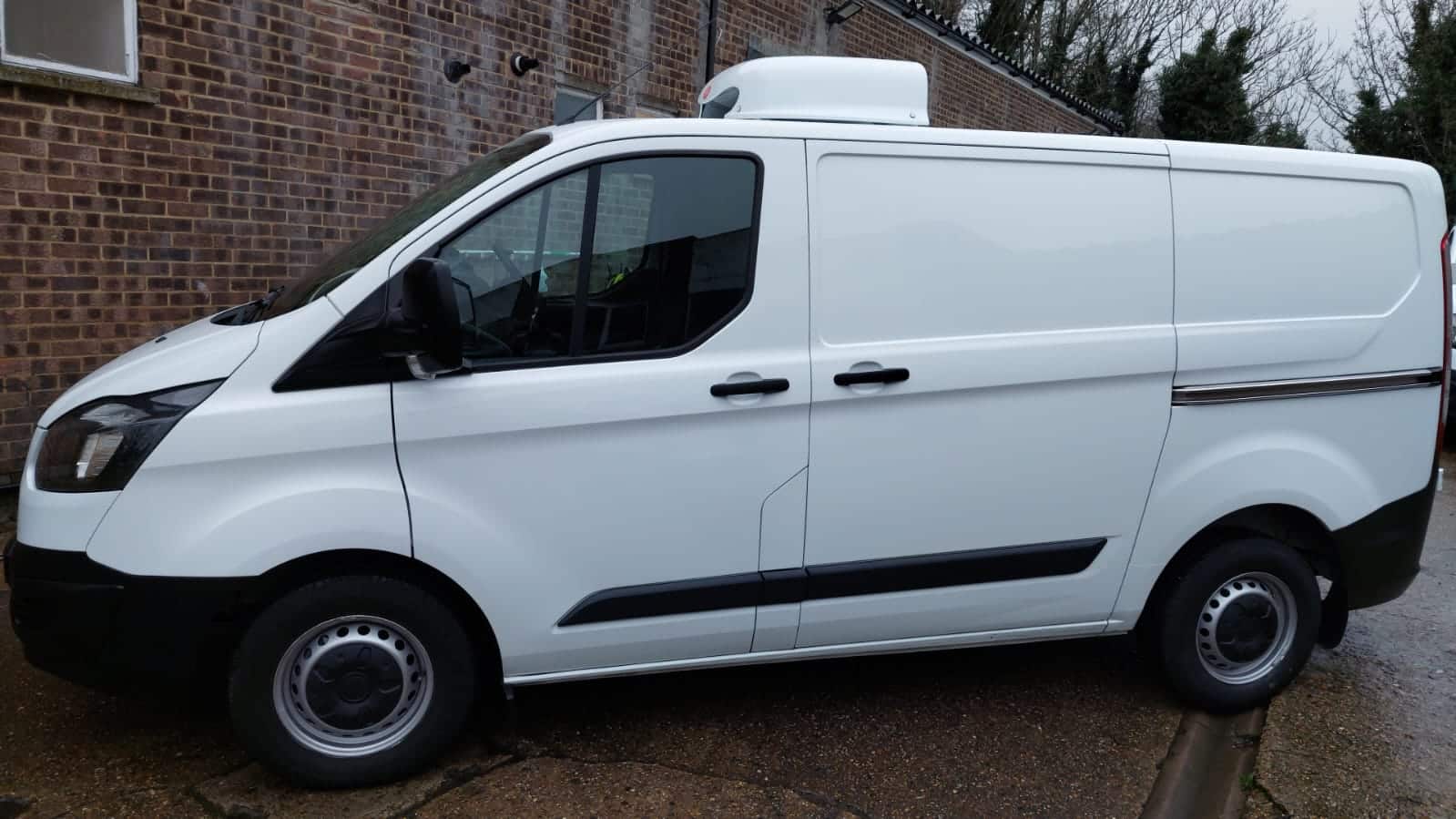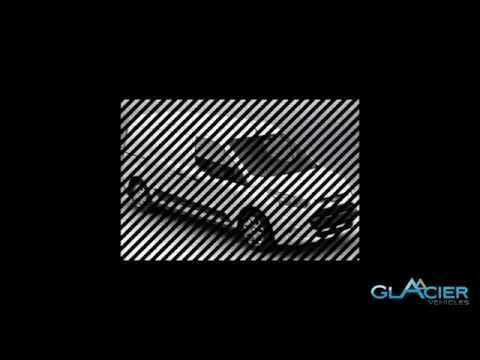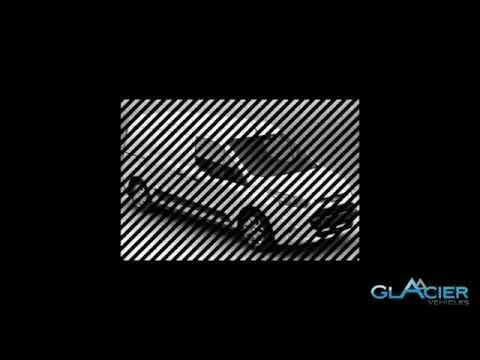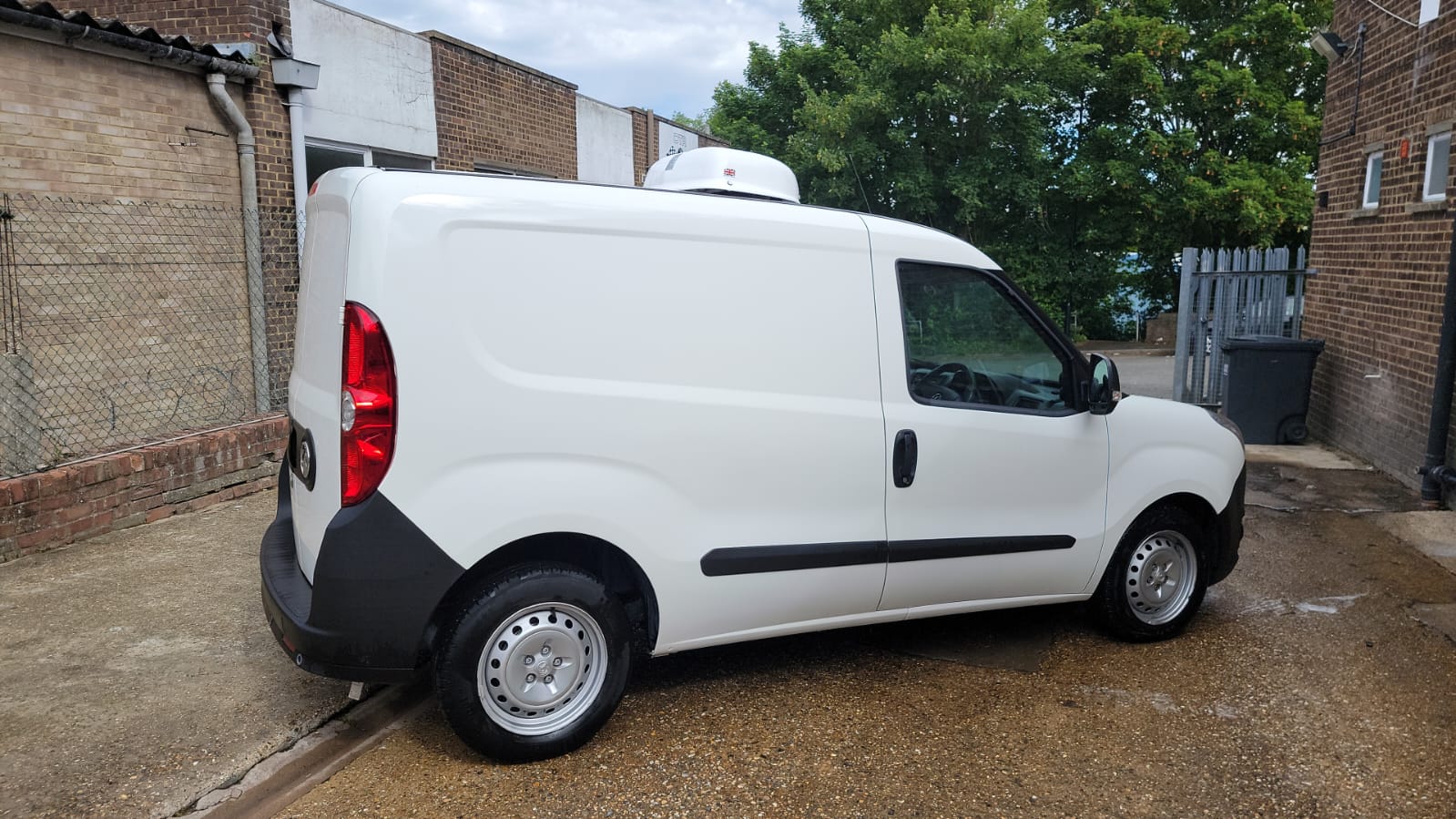
Refrigerated & Freezer Van Conversion Service: Safeguarding Supply Chains With Certified Precision
Protecting temperature-sensitive deliveries demands more than a generic hardware upgrade—it requires van conversions rigorously engineered for compliance audits, operational resilience, and seamless integration with modern cold chain logistics. Failure to meet certification with ATP, GDP, HACCP, or DEFRA isn’t an inconvenience; it’s a direct risk to your contracts, brand, and day-to-day operational certainty. If your fleet’s audit trail is weak or documentation is incomplete, every route exposes you to risk and lost opportunity.
Why Certified Conversions Drive Reliable Growth
Working with certified professionals ensures your vehicles don’t just pass initial checks—they document readiness for every future contract, cross-border inspection, and last-minute audit. What you receive is:
- Multi-standard compliance (HACCP, GDP, DEFRA, ATP, ULEZ), captured in a digital and print record with every handover.
- Built-in flexibility for single, dual, or multi-zone temperature management. Your fresh, chilled, or frozen products are always in spec.
- Full audit traceability—temperature logs, maintenance, calibration reports—delivered in an audit-ready pack.
When proof is built into every hinge and wire, your team navigates contracts and inspections with certainty.”
Who Wins With Full-Spectrum Certification?
Chilled food wholesalers, frozen goods distributors, NHS-clinical carriers, and high-growth SMEs all need evidence-led conversions as audit demands rise and contract thresholds tighten. Upgrading from “fit for purpose” to “fit for future” mitigates the risk of route closures, rejected loads, or insurance loss.
To benchmark your current fleet or upcoming build, request a conversion readiness checklist—a single compliance gap is all it takes to lose a route or a year’s worth of contracts.
What Vehicle Platforms and Certification Standards Are Supported?
Selecting the right vehicle is the cornerstone of logistics performance. Misaligning route, payload, and regulatory fit with the wrong van spec can lead to contract failures, audit rejections, and unplanned downtime. Glacier Vehicles aligns van selection to sector standards, documentation needs, and future expansion plans so your only surprises are new opportunities.
Your Van, Your Standard—Mapped for Sector and Audit
Every platform and configuration is mapped to its regulatory envelope:
- Brands (Mercedes, Ford, VW, Citroën, Renault, Peugeot, Vauxhall, Fiat) mapped by chassis, payload, and compliance.
- Chiller, freezer, or dual-zone temperature ranges optimised for route and buyer demand.
- Documentation, sensors, and compliance hardware matched per vehicle at handover, delivered both digitally and as hard copy.
| Van Model | Typical Application | Key Certifications | Delivered Documentation |
|---|---|---|---|
| Mercedes Sprinter | Supermarket distributors | ATP, HACCP, ULEZ | Logbook, spec sheet, ULEZ |
| Ford Transit | Meal kit, events, SME fleets | HACCP, DEFRA | Partition/cleaning checklist |
| VW Crafter | Pharma, medical couriers | GDP, MHRA | Sensor logs, GDP audit file |
| Citroën Relay | Butchers, dairy, pet foods | DEFRA, HACCP, ULEZ | Maintenance, cleaning log |
Your options are only as good as the compliance paperwork tied to them—don’t risk route eligibility on retrofitted guesswork.”
A vehicle audit reveals if your platforms fit your contracts or block expansion. Future-proof your fleet and request a van-to-standard mapping today.
How Does the Expert Conversion Process Guarantee Compliance?
Every phase of a conversion—consultation, design, build, calibration, and certification—directly impacts the long-term usability and audit viability of each van. Shortcuts in documentation, materials, or test protocol only surface when an inspector or system failure turns a delivery day into a contract-ending headache.
Glacier Vehicles’ Multi-Stage Compliance Blueprint
- Operational Consultation: Matching your logistics plan, loads, and expansion goals to specific certification profiles (food, pharma, animal, export).
- CAD & Specification Design: Route-matched insulation, fridge, and partition selection—no generic templates.
- Certified Manufacturing: ECWTA, ISO, and sector-specific processes enforced for every vehicle.
- Temperature System Fitting: Brand-name fridge, electric standby, and full digital sensors—individually bench and in-van tested.
- Sensor and Seal Validation: Every compartment, zone, and door seal photographed, tested, and digitally tracked.
- Handover, QA Packet: Audit pack, full maintenance tracker, calibration certificates, and inspection signoff at delivery—not months later.
- Aftercare Orientation: Training for all operators and documentation streamlined for regulatory access.
| Process Step | Compliance Outcome |
|---|---|
| Consultation | Contract-aligned plan |
| Design | Audit-matched details |
| Build/Instal | Documentation at each stage |
| QC/Handover | Proof for all buyers, insurers |
| Aftercare | Maintenance, training |
A van is an asset; a conversion is a liability—unless you can trace every step back to a certified standard.”
Book a detailed process review to turn compliance into a growth lever—not a compliance bottleneck.
Why Are HACCP, GDP, DEFRA, and ATP Accreditation Vital for Risk-Proof Operation?
No major customer or public-sector buyer awards long-term contracts without ironclad proof of operational standards. HACCP, GDP, DEFRA, and ATP are not industry jargon—they are requirements that separate growth from operational frustration and lost tenders.
Accreditation as Operational Firewall
- HACCP: Required by supermarkets and high-street food retailers.
- GDP: Every pharma/Rx and NHS shipment needs a continuous, auditable sensor trail.
- DEFRA: Animal, pet, delicatessen, and mixed fleet operators must document hygiene and cold chain integrity.
- ATP: Cross-border, multi-modal, and export contracts block non-certified vehicles from entry.
| Contract Vertical | Certification Need | Risk Without | Audit-Proofing Deliverable |
|---|---|---|---|
| Supermarket/fresh | ATP/HACCP/ULEZ | Fines, lost route | Inspection-ready packets |
| Pharma/clinical | GDP/MHRA | Recall, price penalty | Live digital logs |
| Animal/deli | DEFRA, HACCP | Shutdown, seizure | Maintenance, cleaning rec |
| Export | ATP | Entry ban | On-demand certificates |
A “pass last year” attitude is now a “fail this year” vulnerability as standards evolve. Our ongoing compliance audits, digital reminders, and emergency documentation service ensure your risk stays low and your contracts renew.
Audit pain is never random—it’s always the result of an old shortcoming overlooked one inspection too long.”
Ask to see sector-specific compliance packets—and know your next inspection isn’t luck, it’s a certainty.
How Do Advanced Temperature and Monitoring Systems Protect Payloads?
Today’s supply chain demands digitally validated controls, continuous temperature logs, and audit trails accessible from a dashboard—before, during, and after the goods move.
Sensor Integration for Real-World Asset Security
- Insulation thickness (typically 50–100mm), precise for GDP/ATP contract specs.
- Live, continuous temperature logging with rapid deviation alerting (real-time through dashboard or mobile).
- Sensor-mapped, partitioned zones for multi-product loads; notifications if any area drifts off spec.
- Brand-calibrated fridge units (GAH, Thermo King, Carrier) tested to sector rules and digitally documented.
| Technology | Result | Sector Impact |
|---|---|---|
| Continuous logging | Documented compliance | Regulatory & insurance |
| Live alerting | Loss prevention | Contract security |
| Zone partition | Flexible loads | Multi-contract usage |
| Digital dashboard | Real-time audit prep | Instant route proof |
A compliant temperature log is now your entry ticket—not a bonus. Don’t give buyers or regulators a reason to doubt your fleet.”
Bring your monitoring tech up to spec—let’s discuss the sensor, alerting, and dashboard upgrades that pay for themselves in avoided claims.
When Is It Time to Upgrade, Retrofit, or Scale Your Conversion Fleet?
Sustained growth creates complexity. Old hardware, silent compliance drift, or a new regulatory letter can force costly, disruptive overhaul. Reading the upgrade signals early ensures continuity, lower OPEX, and faster onboarding for the next big contract.
The Fleet Resilience Decision Matrix
- Escalating compliance standards signalled by contracts, regulators, or RFPs.
- Maintenance line outpaces 10% annualised vehicle value, especially in sensors or refrigeration.
- Audit “near misses” or repeated exceptions that haven’t failed but show degradation.
- Expansion into mixed product, new buyer verticals, or cross-border routes requiring ATP/ULEZ.
| Trigger | Signal | Strategic Response | Action Deliverable |
|---|---|---|---|
| Compliance demand | Regulator/contractor | Route/readiness review | Gap analysis, upgrade map |
| Increased OPEX | Maintenance history | Asset-by-asset review | Prioritised plan, budgets |
| Route change | New products/buyers | Spec redesign | Dual/multi-zone retrofits |
| Growth/expansion | Volume/territory scale | Top-down fleet audit | Masterplan, ROI calculator |
Don’t let the most valuable contract slip away because the fleet wasn’t ready to evolve.”
Book a diagnostic session to get ahead of regulatory, maintenance, and capacity barriers that could cost you the season.
Where Are UK-Wide Aftercare, Maintenance & Compliance Support Services Available?
A decentralised support promise is a risk. Coordinated, accessible, and document-driven aftercare is your operational advantage when every audit or breakdown demands fast, reliable response.
Nationwide, Document-First Support Ecosystem
- Preventive and emergency repairs mapped to every region, with priority city and route response.
- Digital scheduling, WhatsApp, and hotline access for maintenance or documentation needs.
- Complete route, audit, and maintenance tracking across all contracts, vehicles, sectors, and sensors.
- Brand-inclusive support for GAH, Thermo King, Carrier, and specialist configurations.
| Support Mode | Service Channel | Response | Documentation Scope |
|---|---|---|---|
| Routine service | Online schedule | 1–2 days | Full spec/maintenance logs |
| Emergency | 24/7 channels | 2–4 hours | Real-time audit/repair file |
| Compliance | Instant hotline | Live | Documented support trail |
| Diagnostics | Remote/on-site | As required | Auto-generated log updates |
Dependability in support, documentation, and repairs ensures your operational plans hold on busy days, not just quiet ones.
Audit and service anxiety evaporate when your support system matches your ambitions—be the standard, not the exception.”
See how documented aftercare protocols and real-time communication can raise your fleet’s eligibility and renewal rates.
Book Your Free Consultation With Glacier Vehicles Today
Top operators don’t wait for an audit to find problems; they showcase their compliance and fleet reliability as a value-add for every RFP, route bid, and key account negotiation. Every asset and contract becomes easier to keep and simpler to grow when your documentation, handover, and digital traceability are at market-leading standards.
Secure your technical audit, compliance strategy session, or multi-zone build assessment—start reducing your audit risk and lifting your contract volume. The benchmark for operational leadership starts with the next decision.
Clients and stakeholders measure readiness by what you can prove, not what you promise.”
Frequently Asked Questions
What makes a certified refrigerated van conversion the cornerstone of operational security and contract growth?
A certified refrigerated van conversion forms the backbone of supply chain reliability, ensuring every delivery clears compliance hurdles and strengthens your standing with buyers who value consistency and proof. When you commit to cold chain logistics, your reputation, renewal rate, and route eligibility depend on traceable build logs, validated insulation, and digital proof that assures regulators, insurers, and procurement managers alike.
Clients and regulators look for evidence—not claims. A certified build delivers: – ATP, GDP, DEFRA, and HACCP credentials verified at handover, so your fleet is audit-ready at a moment’s notice – Digital temperature logging with maintenance and calibration certificates for every journey – Improved insurance outcomes, rapid dockside approvals, and eligibility for high-value contracts
Every route, client, and audit is easier once your documentation aligns with current and anticipated market requirements, reducing risk and unlocking access to more lucrative deliveries.
| Conversion Type | Advantage When Certified | Cost When Not Certified |
|---|---|---|
| ATP/Luton/Chilled | Market access, tender success | Route refusals, fines |
| GDP-compliant van | Full pharma vs. exclusion | NHS pipeline loss |
| HACCP/meals/fresh | Supermarket trust | Buyer removal |
| DEFRA/trades/animal | Insurance proof | Legal/operational risk |
“Eligibility is not won with persuasion—only with proof. The evidence you hold sets the future you access.”
Which van models and compliance packs will future-proof my ability to serve regulated industries?
Your sector, product, and contract profile dictate which van model and compliance solution will future-proof your operations. The days of “one size fits all” are over: only the right platform and credentialing combo makes every load, audit, and expansion opportunity frictionless.
Sector leaders pair vehicle type and certification to match food, pharma, export, and animal byproduct segments. Mercedes Sprinters, Luton bodies, Transit Customs, and VW Crafters—each has a strategic place based on required digital logs, dual-zone partitioning, and temperature behaviour. ULEZ, DEFRA, ATP, HACCP, and GDP must be mapped to your buyers and the routes you want to win.
| Van/Cert Combo | Ideal For | Access Barrier if Absent |
|---|---|---|
| Sprinter/ATP | Retail/export/multi-load | Port delays, lost exports |
| Transit/HACCP/DEFRA | Fresh, dairy, animal-fed | Supermarket rejection |
| Crafter/GDP/ULEZ | Pharma, NHS, clinics | NHS/clinical bid loss |
| Relay/partitioned | Meal kits, mixed payloads | Route exclusion |
Documentation must be as robust as your ice packs: digital logs, maintenance histories, signed calibration for every fridge and sensor. Anything less, and even the best driver—or lowest price—won’t win another bid.
How does a disciplined conversion process secure compliance and maximise return on investment?
The pathway from bid to contract to renewal is defined by a system, not a guess. ROIs and audit survival rates depend on whether your process is robust, cross-checked, and digitally memorialised—not if you “did your best.”
Glacier Vehicles ensures every conversion is more than the sum of its parts: 1. Goal-aligned consultation: Route mapping, sector analysis, and compliance roadmap delivered before design. 2. Precision engineering: CAD models for every payload, insulation, and dual-compartment detail. 3. Accredited build steps: ECWTA/ISO instal, sensor tie-ins, thermal validation, and serialisation. 4. Calibration and signoff: Digital and photographic proof, real-world temperature tests, alarm simulation. 5. Documentation handover: Audit-ready packs, cloud-synced logs, and operator training for maintenance and recordkeeping. 6. Lifecycle support: Aftercare reminders, periodic compliance reviews, optional upgrade alerts. 7. Operator onboarding: Hands-on guidance to maintain logs, clean safe, and pass re-inspections.
With this sequence, you are not crossing your fingers at every tender or surprise audit. You are arming your buyers and dispatchers with something that cannot be replaced: confidence.
“A disciplined process is the only protection that compounds over each contract cycle.”
Why are HACCP, GDP, DEFRA, and ATP certification thresholds the new baseline for contract retention?
In regulated logistics, these certifications set the universal standard for who can serve priority, high-profit, or recurring routes—and who will be relegated to low-margin, risky runs.
HACCP confirms you can deliver safe, traceable food; GDP is non-negotiable for pharmaceuticals; DEFRA underpins meat, dairy, and animal byproduct integrity. ATP is your international passport for cross-border, supermarket, and high-capacity routes.
| Certification | Demand Created By | If Expired or Missing |
|---|---|---|
| HACCP | Supermarkets, QSR chains | Immediate removal list |
| ATP | Ports, border inspections | Entry rejection, goods seized |
| GDP | Hospitals, clinics | Contract void, claims lost |
| DEFRA | Agri-food, animal-based | Fines, seizure, loss of licence |
Buyers and compliance officers won’t chase your records. They expect “show me now,” whether by portal upload or roadside spot-check. If your digital logs, certificates, and maintenance documentation aren’t up-to-date, the easiest decision is to move to a compliant competitor.
How do temperature monitoring, partition controls, and digital telematics redefine logistics leadership?
In modern cold chain markets, leadership is defined by transparency, real-time visibility, and actionable data—since every mile is a contract in motion.
Contemporary systems integrate: – Real-time temperature logging for all compartments, meeting pharma and food buyers’ specification for digital downloads. – Automated exception and alarm alerting, so every deviation is captured, remediated, and reported to insurers or buyers instantly. – Retrofit modules, enabling micro-fleets to match big-league competitors by adding dual or triple zone telematics, dashboard integrations, and on-demand exports. – Telematics-based optimization, controlling route times, product integrity, and regulatory readiness.
| Tech | Leadership Strength | Without |
|---|---|---|
| Real-time logging | Continuous contract assurance | Gaps that trigger loss |
| Partition alarms | Reduced spoilage, higher utilisation | Multi-cargo loss to spoilage |
| Digital upgrades | SME scaling, instant compliance | Manual logs, slow audits |
Smart operators move proactively—not reactively—by using temperature monitoring as a core discipline, not an audit afterthought.
When should a fleet be upgraded, retrofitted, or scaled to keep pace with compliance, buyers, and new bid windows?
Fleet upgrades are not expense—they are renewals of market access, reputation, and gross margin.
Telltale signs to act: – Licence, certificate, or ULEZ status nearing expiration – Recent audit put you “under review,” or you lost a major contract on documentation – New buyer, regulator, or sector opens needing you to compete on dual-zone, ATP, or GDP standard – Climbing insurance costs spurred by repeated claims, breakdowns, or missing incident logs
Optimal decisions are powered by compliance schedule reviews, asset tracking, modular sensor/partition refresh, and strategic swaps—fleet-wide or unit-by-unit. The most forward-looking operators build upgrades into budgets, knowing every two years brings new requirements, new tech—and new contracts for operators who are ready.
Current leaders think in cycles: compliance, technology, demand, renewal. Those who wait risk irrelevance.



